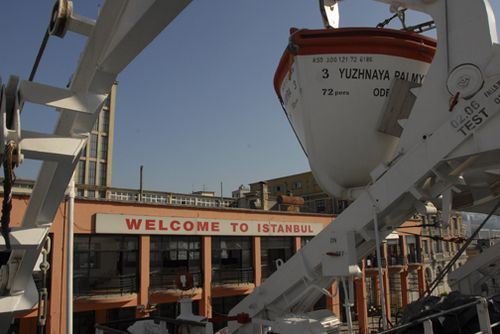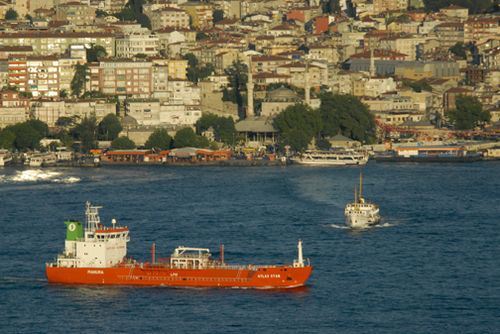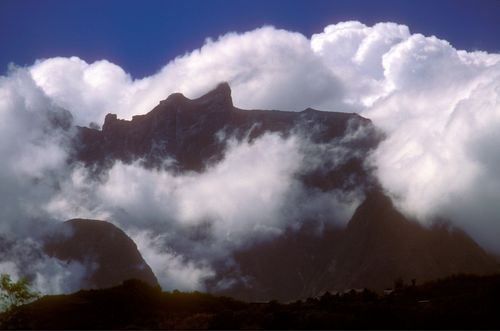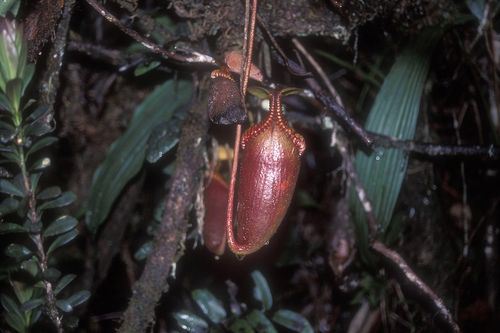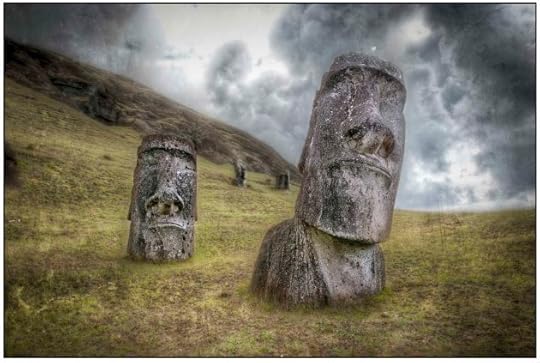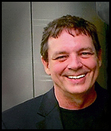Bill Murray's Blog, page 113
June 9, 2015
Istanbul to Odessa by Overnight Ferry
Withsome of the world’s most important headlines coming from Turkey and Ukraine this week, here is a short look back at a trip a few years back by Ukrainian ship between the two countries.
Today we’d sail on the Yuzhnaya Palmyra, a ship of the UKRFerry shipping company, on once weekly service Istanbul to Odessa. It was to be an approximately 28 hour crossing of the Black Sea south to north, although we’d have to see about the timing.
Departure was set for 9:00 on the web, 10:00 on our ticket (a hard copy they insisted on sending via DHL for $70 from Ukraine to the U.S.), and 11:00 by the people at the hotel, who made some calls on our behalf. So arrival as well, I suspected, ought to be approximate.
We presented ourselves down at the Karakoy docks shortly past 8:00 a.m. “Actual Time,” as the reception clock had it. We had ample time for a spin up and down ship, stem to stern, and an extended goodbye to the mosques filling the Istanbul skyline, lying at anchor, as we were, just meters across the Golden Horn from Topkapi and Sultanahmet. There would be breakfast service before heaving ho, part of the “three meals a day provided all passengers.”
It may have still been Istanbul outside but it was full Ukraine in the песторан (restaurant). Most of the good Ukrainian women were fat as those Americans they worry about on the news, most everyone smoking wherever possible, and a bunch of smoking and horseplay over a 9:30 breakfast of Slavic breakfast staples, cheese and meat slices, an egg dish and a sausage, a tea bag and aching-sweet juice the color of kvass.
Kvass was a Soviet era concoction a young man named Еѵгєлу (Evgeny) once showed me how to sample back in 1986 in a kiosk outside Red Square – served with the nice Soviet touch of a single, shared glass. Here each got our own glass. Mirja and I shared our table with a family of three women, all in print dresses, and a video-taping man.
Even as you gazed out onto working ships with good Turkish names like the Turgut and The Osman, and teeming local ferries of the Tur Yol line, here came women indefinably Ukrainian, with name tags Iruna and big ‘ol Svetlana, slinging plates for six or eight stacked right up their arms. There were pats of butter, and a jug of кетчуп (ketchup) on every table.
Syrupy ballads from the steppes blared straight out of Slavic central casting. They were just enough too loud to notice they were a little too loud.
It took half a year for word to reach the Atlantic coast that gold had been discovered in California. Here, it took three minutes to be jostled by regular, abrupt announcements, way too loud. In the style of receptionists back home, whose announcement echoes across, say, the parking lot of the car dealership, they never thought to put the handset down gently, but instead rattled it around in search of its cradle.
Turkish, Turks will tell you, is useless outside his country’s borders. Even inside in this case, as even at the Istanbul dock, the only announcements were in Ukrainian with just an occasional partial English translation.
Further humiliating, the Ukranian home currency, the hyrvna, and the dollar were just about the only ones in play. I had extra Turkish lira, and while they’d trade in them on the Palmyra, I put them away in the (probably idle) hope I could convert them later at a less usurious rate than on the ship.
Lots of smiles among the passengers. A country crowd, I thought, except for young men, most in sleeveless T’s or undershirts which apparently pass for cool or maybe virile hereabouts, all painted with the permanent scowl of defiance you see on 17 or 20 year olds worldwide.
I wish I could have telepathically conveyed, on behalf of every other man, the simple notion, “We don’t want your (brightly painted) woman.”
Those smiles were because frowns, I think, meet the unknown, and it appears Ukrainians don’t get out much and thus lots of stuff is still the unknown. But smiles are the great diffuser.
The Yuzhnaya Palmyra staff was perfectly courteous. They were a little too loud. There was a playroom, a beauty shop (nyet manicures), an open bar (from 8:00 a.m.), a gift shop with cosmetics and a selection of fabrics under locked glass for sale, a disco and a «Country Bar,» a punching bag and a weight machine on deck upstairs, slot machines in the smoky stairwells between decks and two or three swarthy Slavs watching from the shadows beside Lucky Joker and Double Diamond and Ballygator slots.
The Sony TV in our cabin had a replacement value USD$1130 in case of damage, according to the brochure kindly provided in the room. There was a fridge (a Nord, replacement value $260), and a double bed. Perfectly nice.
Muted colors, everything scrubbed spotless. The Palmyra was nearly spotlessly clean, yet only after a scant few hours the crew set about washing down the decks. Mirja was reading a book titled Ahab’s wife, and in Ahab’s honor decided to name this ship’s captain Captain Anal.
We looked set to waddle north across the sea, to’ing and fro’ing and smoking, side to side ambling with a boat full of tourists from Ukraine who’d come down to see Istanbul and were now headed home.
The ship offered its Ukrainian passengers “The Night Panorama” tour, “Folklore show at the Orient House,” “A visit to Aqua Marine water park,” and “Aviation Museum” tours, among others.
How in the hell did they get the couch in the cabin!? It measured palm to armpit in its smallest dimension and the door was only palm to biceps. And anyway the clearance in the passageway only scarcely accommodated two standing people and the couch was longer than me if I laid on it. It wouldn’t fit it through the window. The window was even smaller.
At 12:10 the tender Zubaydeh arrived, connected and winched us away from Karakoy pier, and by 1:30 we’d finished the traverse of the Bosphorus, clearing the final lighthouse.
Shortly before we left the Bosphorus coast we slipped past a shipment of the most busted up, dilapidated old tractors you’ll ever see, sliding by us to port, all heaped one in front of the other on the deck of a cargo ship. You just had to wonder first, to whom they were worth saving, and second, from where they came – the Donbass in eastern Ukraine, maybe Abkhazia, the breakaway region of Georgia to the far east of the Black Sea?
Surely not from the north coast of Turkey, from whence they might have been transported by road or rail, or from the richer Danube basin to the west.
Shoreline fell away instantly behind the queue of ships stretching off toward Bulgaria and Romania and the Danube delta beyond. Ahead was only open water, no shore forward of the ship.
Land nearly gone behind us, staring into the rising and falling and ever re-forming triangles shaped by the waves, we considered the stark division between man-induced worries just back there, amid the bawling frenzy of 14 million people in Istanbul, and the abrupt and absolute indifference of the sea.
Just at this time back at home I was involved in two separate and entirely different matters involving lawyers, in two different states. I vehemently did not ask for either affair, but rather they sought me out, and I had worked myself into some kind of a case of hand-wringing nerves prior to our sailing, trying to find out the latest back home. The sea did not give a damn.
It was a succession of feeding on the Yuzhnaya Palmyra, just like on the glitz ships of the west, but lunch was culinarily less successful. A cup o’ creosote, a cold beet salad, brown meat Mirja divined as pork. Music had turned to a rather too loud and dramatic piano.
There were, however, nice home touches. Like flipping a switch we had moved from Levantine vine leaves and Turkish puff pastries – still just about literally within sight to aft – to warm, familiar Finn-like food: potato soup from tureens and shredded cabbage salads.
After our tablemates left and the dining area began to clear out, it became impossible not to notice the increasingly theatrical, but no less real, weeping at a table over behind Mirja. A woman in a black sleeveless blouse sat in the seat nearest the wall, clutching a tissue, facing the window, keening at the sea. She was utterly alone.
We gave her considerable berth but we were concerned enough to ask the serving women if they thought they should look after her. Mirja imagined she had just gotten a cell phone call with news of a death or equally weighty calamity.
But the woman we asked sort of touched her temple, indicating the woman was perhaps a touch mad, and made us know that the woman was made sad by the melodramatic piano music with which they flooded the dining hall.
We could only assume maybe they’d already had this experience with her on the way down from Odessa, and at least in any event we knew the staff women in the dining hall didn’t seem too concerned.
And later on, in Country Bar, Mirja spotted our weeper grooving to the Europop, then dancing alone in a performance we could only guess she would rue in the morning. If she was drunk for her afternoon keening session, she had bounced back professionally.
An east wind and full sun led to a calm sunset. In the afternoon as we all lolled on deck, a meteorological phenomenon reminiscent of Lake Malawi filled the sky. In Malawi the gray had been its lake flies. Today over the Black Sea an isolated bank of cloud set up a gray wall of precipitation which evaporated before it reached the level of the sea. A gray wall against the sky from the clouds to an indeterminate level above our heads and out to the horizon, rain that stopped en route to earth.
After midnight the Palmyra took on a pitch and a roll, the plates in the pantry rattled, and out on the deck, just as beautiful a moonset as you’ll ever see, the ship now quiet, the horizon undiscernable. The moon hung impossibly low, its position against the horizon impossible to judge, a sharp half moon, lit on its face from 1:00 to 7:00, pumpkin orange, the only light to be seen outside the white caps lit by the ambient light of the ship.
I thought to break inside for my camera but stood down, for I knew instantly that its beauty would be impossible to capture on mere film, like a landscape we once saw crossing Tibet.
On this night its radiance defined the freedom of the sailor, unencumbered by humanity, open instead to the gaping enormity of nature.
– See the Ukraine Gallery and the Turkey Gallery at EarthPhotos.com.


June 5, 2015
Climbing Mt. Kinabalu
With Mt. Kinabalu in the news as some 137 climbers pick their way down the mountain after yesterday’s frightening earthquake in Borneo, herre is the story of our ascent several years ago. It’s a chapter in the book Common Sense and Whiskey.
•••••
A fine young man with a Yesus Kristus medallion bouncing around beneath his mirror drove us the seven or so kilometers into Mt. Kinabalu park, through the sleeping village of Kundasang. Farmers congregated at a warren of tin-roofed stalls along the main road. It looked like a good day for green tomatoes, potatoes, and cabbage.
They hauled us all in bas minis from the ranger station to the trailhead. From there, a six-kilometer trail led up to our destination, the Laban Ratah guest house, at 11,000 feet. At 13,432 feet, Mt. Kinabalu’s summit, in Malaysian Borneo, is the highest point in Southeast Asia.
The first kilometer (the trail was marked at each 1/2 kilometer) popped by in 23 minutes. We were flyin’, and all that stuff about how hard this would be was just talk. The first kilometer, we only stopped long enough to shed our wraps.
Just at first the trail led downhill, charming, to a cool, wet place called Carson’s Falls. On the way down the mountain, conversely, having to climb at the end was just one last kick in the butt on the way out the door.
Still before 8:00 a.m. no sunlight had fought its way to the forest floor. The air was downright chilly once our shirts turned sweaty. And they did — at the first K marker they weren’t soaked through, but a breeze blew down the rise and chilled our damp skin.
We were cocky, jaunty, making tracks, and unappreciative of the flora, except the little violet flower of the Kinabalu Balsam, which was shaped more like it had a beard than lower petals.
The massif stood silent and still, the only sounds birds or a rustling squirrel. There are no monkeys on Mt. Kinabalu. They live nearer the sea, to the east.
The Summit of Mt. Kinabalu, 13,435 feet.
Our guide Erik was a volcano of phlegm at first, hacking, spitting, coughing, exercising all facial cavities. He was a little guy, as these highland people were, but with the strong, imposing legs you’d imagine.
He guided once a week, reckoned he’d done the climb fifty times. His personal record to the top — a place called Low’s Peak — was about three hours.
The rest of the week he helped his parents haul their produce to the Kundasang market, where you cain’t make no money. Erik said a kilo of cabbage brought fourteen U.S. cents.
•••••
Grim realization set in during kilometer two. I felt my pack with every step, even though all it held was a camera, a towel, a dry t-shirt, bread, cheese and water.
We appreciated the moss, ferns and banana trees and searched for these particular birds who sang in two notes, but a little more grimly, a little less buoyant, quieter. Still, we made two kilometers in 58 minutes, and there were only six, total. We fed the squirrels some of the tiny peanuts Mirja had bought. Still cool and still, the entire third kilometer. Dark, thick, jungly, even almost cold, and about an hour and a half after we’d set out, at two minutes to nine, we marked halfway.
•••••
In the fourth kilometer, blazing red running shorts caught my gaze. I looked up from the path and it was a Japanese fellow, smiling. He made the summit, turned, and passed us on his way back down before we’d made four and a half K. I just couldn’t believe that.
They do this run as competition. The winner last year, Ian Holmes of the U.K., did 21 K up to the peak and back in 2:43:20, trailed by fellow Brit Simon Booth at 2:43:22. Poor Simon Booth.
•••••
I thought of Beck Weathers on that famous ill-fated Everest expedition, who was left for dead, but stumbled, frostbitten, back to camp. He said mountain climbing, really, was simple. All you had to do was be in shape and then not let your mind defeat your body. One foot in front of the other, he said, it’s all just endurance.
But by now I was grim, unhappy, soaked-through wet. I used Weathers’ advice and eventually thought I’d achieved a sort of runner’s high. I had a little bounce back, but I was hiking sloppy — lurching, and, when there was something to grab on to, I hauled myself up by it. Still, I was sure for the first time since Carson’s Falls that we would make it. I turned cocky.
We stopped to enjoy Mirja’s chocolates and tiny peanuts, like they sell in Nuwara Eliya, back in Sri Lanka. We sat there steaming. Our own personal dew points produced our own, individual, self-generated clouds of steam, our shirts purely drenched through.
•••••
Porters made good money — six ringgits per kilo — but that work’s just too hard, Erik thought, and I was sure he was right. A typical load was ten to twelve kilos (twenty max) and that’d bring you twenty bucks — then you had to haul the trash back down from the top.
Erik liked guiding.
U.S. twenty was real money. The park required we have a guide and took a fee for him, so that Erik made about eight bucks for his day, probably as good as a porter if he got a right-tipping foreigner — and no taking out the trash.
The porters plied the path up and back, right alongside us, low to the ground and bent, exchanging local-language intelligence with Erik on the way, usually hauling rice bags full of supplies for the restaurant and guest houses up above, held by straps across their foreheads. Or sometimes they’d be laden with daypacks and duffels of tourists.
Twice we passed Japanese girls in flip-flops, and the last one was really hobbling, on her boyfriend’s arm. Mountain climbing may involve stepping over rocks. Apparently they were not told.
•••••
Erik commanded pretty good English.
Had he ever been to K. L. (Kuala Lumpur, the capital)? I asked.
“No, but when I get money I take my baby.”
It’s a big city, you know, tallest building in the world (at the time)….
“Oh, no!” Scornful reply. He was aiming high. “Maybe one day I get 10,000 ringgits I go around the world!”
•••••
I spent long minutes anticipating the sun, by which to energize. We were still deep within the forest at the two-hour mark, and again I had begun to flag. It was damp, I was wet, and the path stretched only straight up.
Twenty or thirty meters of steep steps would lead to a bend, and you’d yearn for a stretch that didn’t lead straight up, but time after time after time after time after time, you’d reach the bend and see even crueler steps beyond. And then you’d do it again. And then again.
•••••
At first the sun would hit the forest floor in this odd spot or that, then as we rose (so slowly) up the hill you’d see sun more often than not, and by 10:00 in the morning we stood at the Layang Layang staff hut, on a little plateau flooded by sunlight. I drenched my head under a water pipe.
Up to now there were few on the mountain with us except the runner and a couple of porters. Now groups of overnight campers passed us bound for the bottom, but no one but Malay boys climbed (in fact, we were the first to set out, and first to arrive at Laban Rata).
Eric was constant. Mirja and I waxed and waned at intervals, and kept one another goin
g. At the four K mark, I hit my stride one last time. It was 10:08, only two K to go. I fairly strode ahead. The sun was out now, but we’d ever be ducking into a crook in the trail that led through shaded forest.
Here was a sign, “NEPENTHES VILLOSA areas 9000-10,300 ft.” by which they meant those curious pitcher plants were about, and we spied several in the woods, the biggest the size of two fists.
The curious pitcher plant.
A big Chinese contingent slid downward, all chatty. Along about here my recently found vigor ran out and I resented their being able to breathe. Like Mirja said, on the way up it’s your heart and lungs, on the way down it’s your legs, and I began to get an ugly payback for my cocky “hitting my stride” bit, as I could hear my heart pounding in my head.
We stopped (it was an excuse to stop) to watch a green bird, the “Mt. Kinabalu Blackeye.”
•••••
Now this was terrible. Stretching above us we had to begin some scrambling. It was just damned hard. Mud. I saw myself closed off now, thinking only of where my next foot would go (except I had this vague “What the hell were you thinking!?” notion bouncing around my head, too).
I seized upon a mantra. I said to myself, over and over, “Mt. Kinabalu blackeye.” Over and over. Now, whenever we’d spy anyone above us on the trail, we’d (“graciously”) stop to let them slide by.
One fifty-something Japanese fellow laughed at himself how he’d taken eight and a half hours to the summit. Hell, we weren’t even going to the summit and we weren’t laughing. Yeah, but anybody can laugh and climb down, I thought.
Now came a section where you had to haul yourself up by rope. Now the trees were small, dwarfed and gnarled by the wind, cold and thin air. They were small, but Erik said some were hundreds of years old.
At 10:58 we stood on the five K marker. Someone coming down asked if this was our first time and Mirja peremptorily replied, “And the last.”
We could see the South China Sea from here, 52 kilometers to the north. And our hotel, the Perkassa, high on its hill overlooking Kundasang town, was an insignificant little speck below. We stopped every third or fourth step for the last kilometer, which took 50 minutes.
At 11:48 we reached the top.
Which wasn’t the top. The Laban Rata guesthouse was built 15 years ago to support summit seekers. At 11,000 feet, it has 20 tables, bunks and a grocery with Milo, old batteries, candy bars, Carlsbergs and a kitchen serving up fried rice, sweet corn soup and coffee. The bulletin board admonished, though, that today we had no: cream of chicken soup, Maggi chicken, chicken, lemon or chicken curry. Cursed porters.
So we had lunch – fried rice – and climbed down. Four hours twenty minutes up, 3:10 down. On the way to the bottom we passed a mere boy carrying a 40 kg coil of rope. Impossible. Weak as I was by now, I couldn’t even lift it, but he hoisted it through two loops onto his back and it would take a day and a half to haul it up there — for 63 dollars in ringgits.
We were both thoroughly hobbled by the last two K down, Mirja and me, our brakes having given out, both of us gripping the handrails when there were any, noticing all too clearly that Eric just ambled on down the hill ahead of us the way he had ambled up. We went home, ate a table full of daging redang and papadums with a side of fiery red chopped chillis, and slept hard by eight o’clock.
•••••


Friday Photo #25 from Helsinki, Finland
This week, it’s the waterfront and Lutheran cathedral in Helsinki, Finland. I’m looking forward to being in Finland one month from this moment, for a week at the lake near Varkaus in Eastern Finland.
Click the photo to enlarge. There are 237 more photos In the Finland Gallery at EarthPhotos.com. And see all the Friday Photos here.


June 4, 2015
Meeting the President
Vigdís Finnbogadottír was president of Iceland for sixteen years and Europe’s first female president. She has been out of office for some time and so it’s a pleasure to see her back in the press, speaking at a Copenhagen culture centre. And she looks great. Here is a screen grab of the photo in the article, with photo credit to the Icelandic President’s Office.
In 1991, before the worry over climate change in the Arctic and before Icelandair had established itself as the fine link between North America and northern Europe that it is today, Iceland kept an indistinct profile as a frozen island way up there somewhere in the dark. Only five years earlier Ronald Reagan brought U.S. landing rights for then tiny Icelandair as a lagniappe for then Prime Minister Hermannsson to the famous Reagan/Gorbachev summit.
Every place as off-the-beaten-track as Reykjavik in 1991 calls out to me, and so when Icelandair had a sale, I flew up in the middle of winter. For braving the far north at the opposite of Iceland’s then-tiny tourist season I was rewarded, entirely by chance and the help of some great local people, with a meeting with President Finnbogadottír. Here is the surviving snapshot. That’s the Minister of Culture, right, the President, and me.
(As an aside, the Icelandair Saga Lounge at Keflavik is spacious and airy with lots of hot food choices. Looking forward to transiting next month en route to Finland.)


June 2, 2015
Chekov’s Gun
Imagine last Sunday as screenplay:
Fade up as a massive C-130 cargo plane thunders overhead. Aboard is the lead negotiator in fraught talks with a longtime American adversary. There are exactly thirty days until the deadline for a nuclear deal that the President of the United States seeks as his legacy. The negotiator, who is also the Secretary of State, is being airlifted home for surgery after an accident. Blue emergency lights and that two-tone European ambulance wail, and fade to black.
Fade up on muted yellow lights and low, mournful music. It is the very same day in Washington, and the president’s second in command is laid low, gut-punched with bereavement over the death of his son. In the movie it is clear the Vice President of the United States, in his grief, will be incommunicado for days.
A cacophony erupts as the gauzy yellow at the Vice Presidential residence becomes the yellow of midnight oil burning at the United States Capitol building where the Senate, in rancorous, extraordinary Sunday session, debates whether it has unilaterally compromised American national security and laid the United States open to enemy attack. It is still the very same day. Which could only happen in the movies.
•••••
Sure it’s all a coincidence but it makes me uneasy. If the events of Sunday, 31 May were a movie, by the end of Act One Chekov’s gun would lie squarely in the center of the table. Something “no one could have foreseen” would be about to occur.


May 29, 2015
Playing in Traffic. Friday Photo #25, Saigon
Photography is not for the faint of heart. Don’t try this at home. Or at least without a bellyful of good Vietnamese beer. Saigon. At night. In the holiday season. On a crosswalk.
Click photo to enlarge. Vietnam is a completely enchanting, engrossing and picturesque land. Have a look at 442 other photos from all over the country in the Vietnam Gallery at EarthPhotos.com. And see all the Friday Photos.


May 28, 2015
Post Soviet Politics Never Stops
A rift has opened up across post Soviet Europe in the wake of the Riga Summit, (that’s Riga across the Daugava River, above) with all the former Soviet states lining up according to their perceived interests. Armenia and Belarus resist the final declaration in Riga, each beholden to Moscow for various protections, while Georgia, the Baltics and Ukraine clamor to camp under the EU umbrella.
The best way to decide what you think is to listen to respected scholars, but they line up equally on both sides. Andrew Michta and Judy Dempsey call the EU feckless while Stratfor and Brian Whitmore put President Putin on the back foot.
Who’s right? And with the injection of the US instigated FIFA controversy and the opportunity it affords the US to scold Russia and vice versa, what’s next?


May 22, 2015
Friday Photo #24, Ethiopia
This is an overflow crowd worshipping in the courtyard of St. Mary’s Church on Mt. Entoto near Addis Ababa, Ethiopia. Click the photo to enlarge. See also the Ethiopia Gallery and 576 other HDR Photos at EarthPhotos.com, and see all the Friday Photos.


May 15, 2015
Friday Photo #23, Moai at Easter Island (Rapa Nui)
Click to enlarge these moai at Rano Raraku Quarry, Easter Island (Rapa Nui). See the Easter Island Gallery at EarthPhotos.com, and see all the Friday Photos.


May 8, 2015
Friday Photo #22, Havana
With news this week that the U.S. has approved ferry routes to Cuba, Havana won’t be like it is now, very much longer. Americans who want to experience Havana the way it has been during the embargo should act soon. Whatever you do, get down there before the Invasion of the American Franchises. Please don’t wait until Havana has its own Bed Bath and Beyond. That would pretty much be missing the point.
Here is just a random, kind of unkempt Havana balcony across the street from the big capitol building. Click it to enlarge it and enjoy the detail. See more photos from our March 2012 visit to Havana in the Cuba Gallery at EarthPhotos.com. And see all the Friday Photos.



